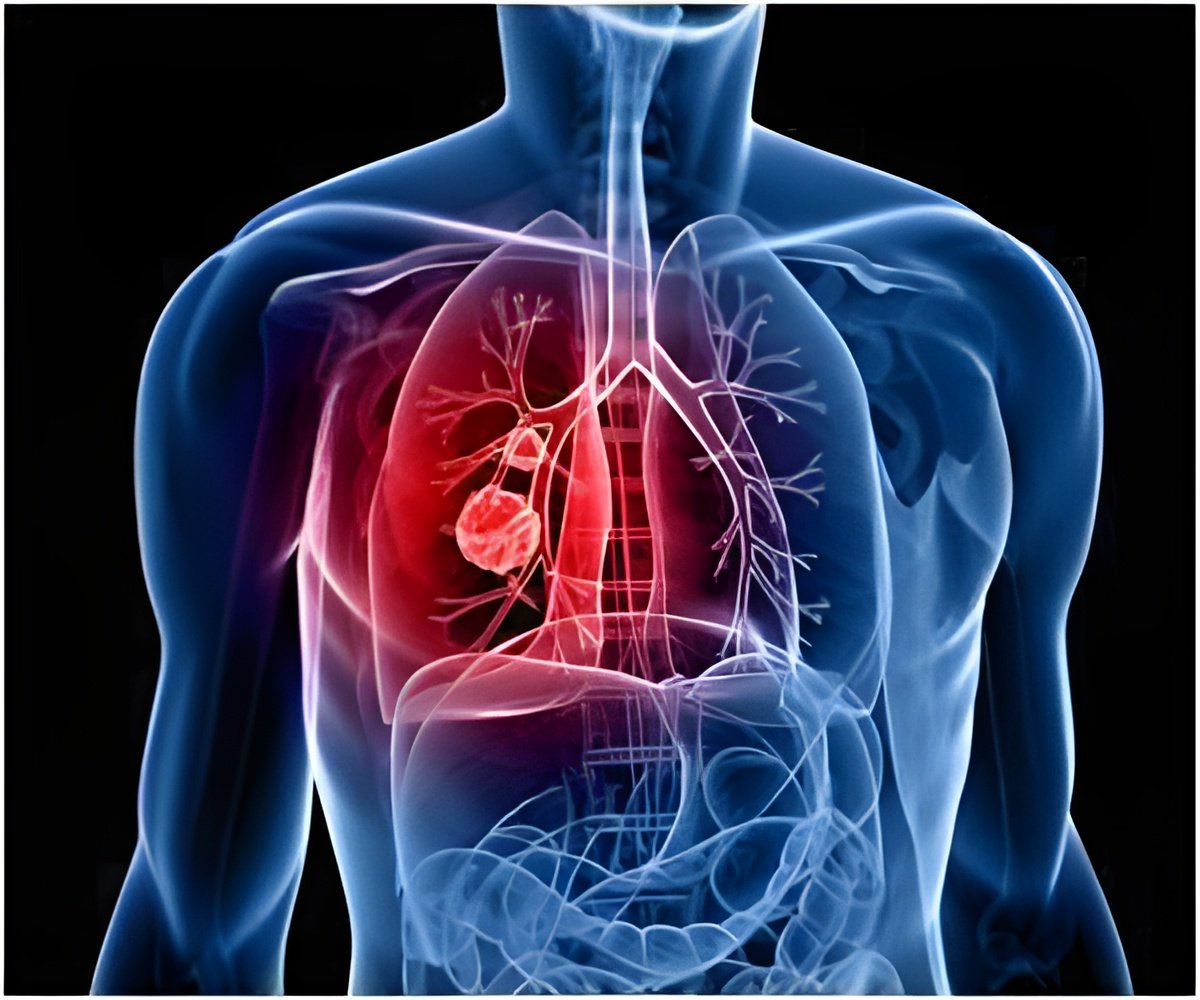
Otterson and colleagues evaluated the drug combination in 63 patients with advanced NSCLC. Seventy-six percent of patients had squamous histology, making them ineligible for bevacizumab. Other contraindications for bevacizumab among this patient population included hemoptysis, thrombosis and therapeutic anticoagulation. Researchers assigned patients to 300 mg/m2/AUC6, which was later adjusted to 260 mg/m2/AUC6 due to excess neuropathy, every 21 days.
Researchers found an overall response rate of 41 percent among 53 patients available for evaluation. An additional 39 percent of patients had stable disease for at least six weeks. Disease progressed in 19 percent of patients.
"We have been surprised at the durability of response with some patients not requiring further treatment for at least six months," Otterson said.
More than 10 percent of patients had grade 3 to 4 toxicities, including hematologic toxicity, febrile neutropenia, infection, sensory neuropathy, dyspnea and dehydration; researchers reported four deaths as grade 5 toxicities.
"This combination treatment should be an option, particularly for patients with squamous histology who have limited alternative options," Otterson said.
Advertisement
Press registration for the AACR Annual Meeting 2012 is free to qualified journalists and public information officers: http://www.aacr.org/PressRegistration.
Advertisement
Follow the AACR on Facebook: http://www.facebook.com/aacr.org
About the AACR
Founded in 1907, the American Association for Cancer Research (AACR) is the world''s first and largest professional organization dedicated to advancing cancer research and its mission to prevent and cure cancer. AACR''s membership includes 34,000 laboratory, translational and clinical researchers; population scientists; other health care professionals; and cancer advocates residing in more than 90 countries. The AACR marshals the full spectrum of expertise of the cancer community to accelerate progress in the prevention, biology, diagnosis and treatment of cancer by annually convening more than 20 conferences and educational workshops, the largest of which is the AACR Annual Meeting with more than 18,000 attendees. In addition, the AACR publishes seven peer-reviewed scientific journals and a magazine for cancer survivors, patients and their caregivers. The AACR funds meritorious research directly as well as in cooperation with numerous cancer organizations. As the Scientific Partner of Stand Up To Cancer, the AACR provides expert peer review, grants administration and scientific oversight of individual and team science grants in cancer research that have the potential for patient benefit. The AACR actively communicates with legislators and policy makers about the value of cancer research and related biomedical science in saving lives from cancer.
For more information about the AACR, visit www.AACR.org.
Presenter: Gregory A. Otterson, M.D.
Abstract Number: LB-225
Title: Phase 2 Trial of nab-paclitaxel plus carboplatin for advanced NSCLC in patients at risk of bleeding from VEGF directed therapies
Author Block: Erin M. Bertino, Miguel A. Villalona-Calero, Patrick Nana-Sinkam, Sarah Cantrel, Meliha Rahmani, Carrie Symmes, Gary S. Phillips, Gregory A. Otterson. Ohio State Univ. Comp. Cancer Ctr., Columbus, OH
Background: The addition of bevacizumab (Bev) to platinum based chemotherapy results in higher response rate (RR), progression-free survival (PFS), and overall survival (OS) in advanced non-small cell lung cancer (NSCLC). However, Bev is not indicated in patients (pts) with squamous histology or with hemoptysis due to bleeding risk,. Nab-paclitaxel is a novel formulation of paclitaxel with higher dose tolerance and potentially improved efficacy. A previous study of nab-paclitaxel/Carboplatin (using an alternative schedule) showed a higher response rate in patients with squamous histology (Socinski, et al, ASCO 2010, LBA7511). We hypothesized that in pts with NSCLC ineligible for Bev therapy the combination of nab-paclitaxel and carboplatin (Cb) would be superior to alternative doublets.
Methods: We conducted a single-arm, single-institution phase 2 trial (NCT00729612) to evaluate RR (primary endpoint), safety/toxicity, and survival (OS, PFS - secondary endpoints) in patients treated with nab-paclitaxel and carboplatin (Cb). Eligible pts included: squamous histology, history of hemoptysis, requirement for anticoagulation. Correlative studies included blood microRNA profiles pre-treatment. Treatment was administered every 21 days, initially at 300 mg/m2/AUC=6, but then adjusted to 260 mg/m2/AUC6 due to excess neuropathy.
Results: 63 pts (21 female, 42 male) with median age 63 yrs (range 36-82) were enrolled. Pts had an average 50 pk-yrs tobacco use. The most common histology was squamous cell carcinoma (48 pts/76%), followed by adenocarcinoma (9 pts/14%), NSCLC NOS (4 pts/6%) and adenosquamous (2 pts/3%). In non-squamous pts, eligibility criteria included hemoptysis (11 pts), thrombosis (2 pts), and therapeutic anticoagulation (1 pt). Grade 3-4 toxicities seen in more than 10% of pts included hematologic toxicity (36 pts/57%), febrile neutropenia (9/14%), infection (15/24%), sensory neuropathy (17/27%), dyspnea (10/16%) and dehydration (8/13%). Four deaths_including 1 sudden death and 1 death due to respiratory failure_were reported on study as grade 5 toxicity. ORR was 41% (22 PR/0 CR) in the 53 pts evaluable to date with 39% (21 pts) stable disease and 19% (10 pts) progressive disease. PFS/OS data is not yet available.
Conclusions: The combination of Cb and nab-paclitaxel demonstrates promising efficacy with tolerable toxicity in NSCLC pts ineligible for Bev therapy. Further study in the squamous cell population is warranted. Correlative studies of microRNA profiles and survival data (OS and PFS) is maturing and will be available in the near future.
Source-Newswise













